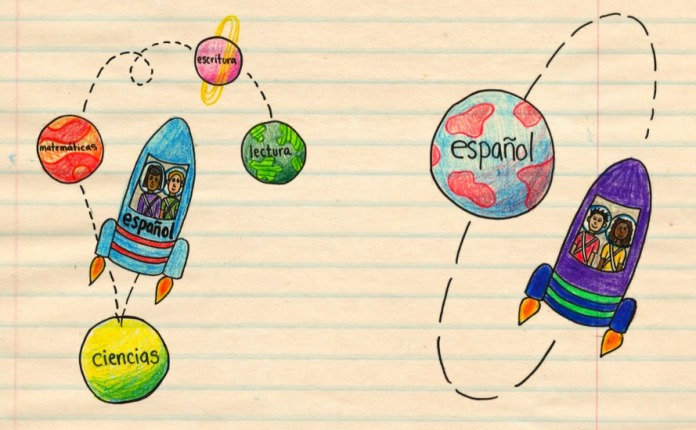IN Spanish
We are Laura and Berenice, two bilingual educators from Washington, D.C. Over the years, we have used our academic knowledge, intuition and creativity to carry out one of the toughest tasks in education: to teach in Spanish in the United States. If you are a fellow “in” Spanish teacher, you probably get the bolded letters, as often times we are confused with our cousins, the teachers of Spanish.
In our context, confusing these two prepositions generates all kinds of trouble! While explaining our scope of work, it becomes essential to highlight this difference. We often find ourselves saying, “Well, I am a 4th grade teacher and I teach literacy, science, math, etc… but IN Spanish.”
Even websites that offer educational resources fail to recognize the difference between “in” Spanish teachers and teachers “of” Spanish. When searching for resources, we go through product after product targeted to teachers “of” Spanish in an attempt to fit our needs. At times, we must search among lists of Spanish verbs and vocabulary practices to find something that “might” just work – if tweaked, of course.
This “of” vs. “in” difference is a pretty simple one, yet requires elaboration when addressing an audience unfamiliar with bilingual education. First, one has to explain what bilingual education is, which is critically different from language education.
Teachers “in” Spanish teach content and academic skills, using the Spanish language as the vehicle for instruction.
Teachers “of” Spanish teach Spanish as a second language.
The fact that we have to repeatedly explain this difference with such intentionality speaks volumes of bilingualism’s infancy stage in America, and highlights our role as pioneers in the bilingual movement. In 2011, the Center for Applied Linguistics (CAL) only registered 239 Spanish immersion programs in the US. Even though this report is outdated, we know that this number has exponentially grown in the last four years. However, we’ve all worked in isolation from one another or collaborated in small local pockets. It’s time to become united, communicate and excel in our unique mission; lifting our “IN” Spanish motto up high.
Acento invites you to join this united space and grow as a learning community. Through this blog, we will explore “in” Spanish education challenges, learn together and collaborate.
Do you want to be a part of the Acento movement?! Stay in the loop by connecting with us via Facebook.



Leave a Reply
Want to join the discussion?Feel free to contribute!